Invaded By Another World
02 March, 2024
Isekai anime has often been a one-way trip, perhaps with a journey home at the end, and this did not begin with isekai tensei; it is true of many older anime, and most of its literary antecedents as well. Yet there are exceptions, even in written form; the White Witch, Jadis, in The Magician’s Nephew threatens to conquer Earth, and antagonists from many an anime series have followed her lead. Narnia’s popularity extended to Japan, and it is not wrong to view her as the prototype for this sort of character. She returns home with the heroes, threatens their home country’s capital (London, not Tokyo, this time around), overpowers law enforcement, and seeks the conquest of Earth. Though admittedly, few of her successors are so bold or arrogant as to demand slaves and a chariot from the first person they meet!
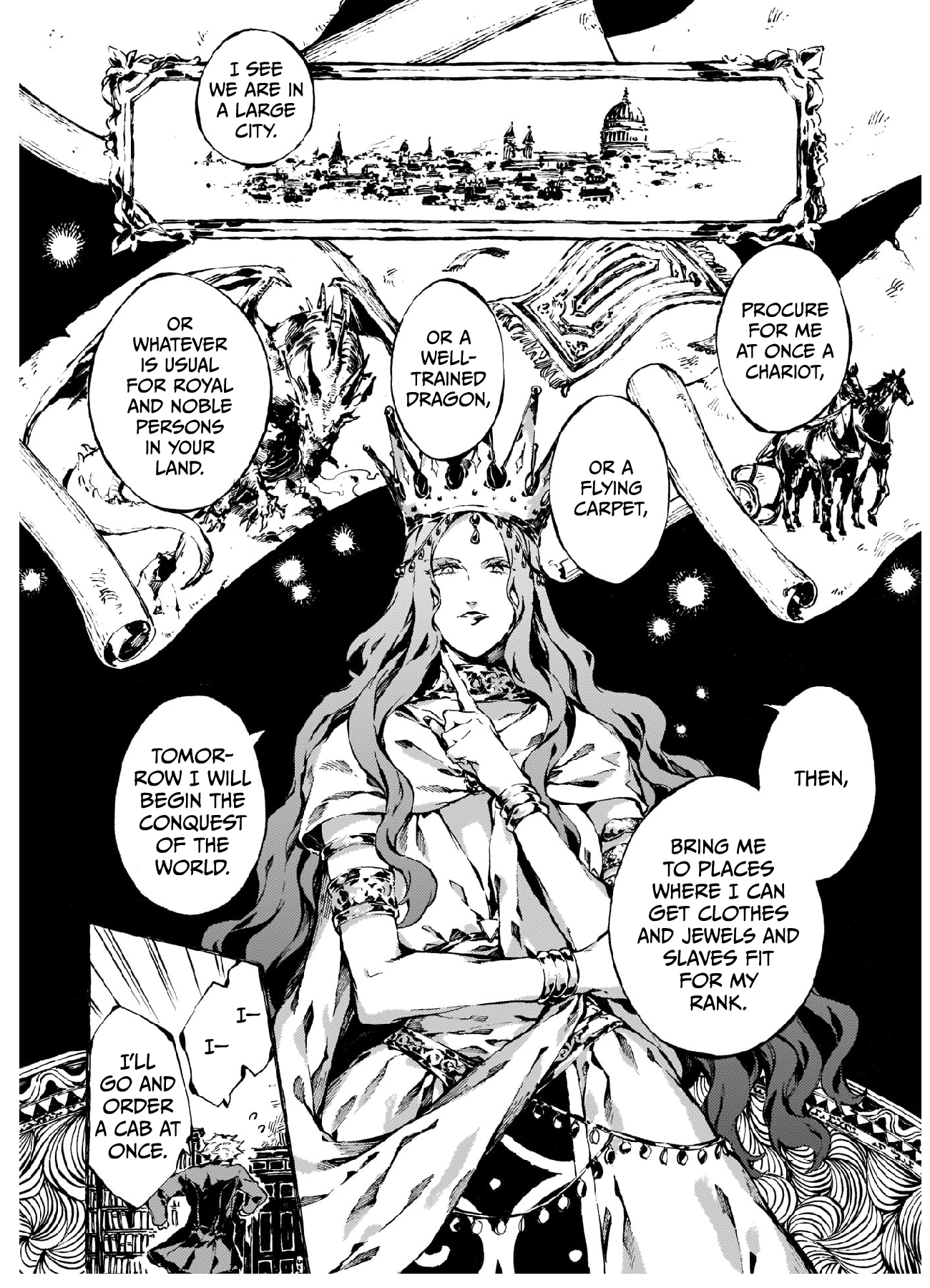
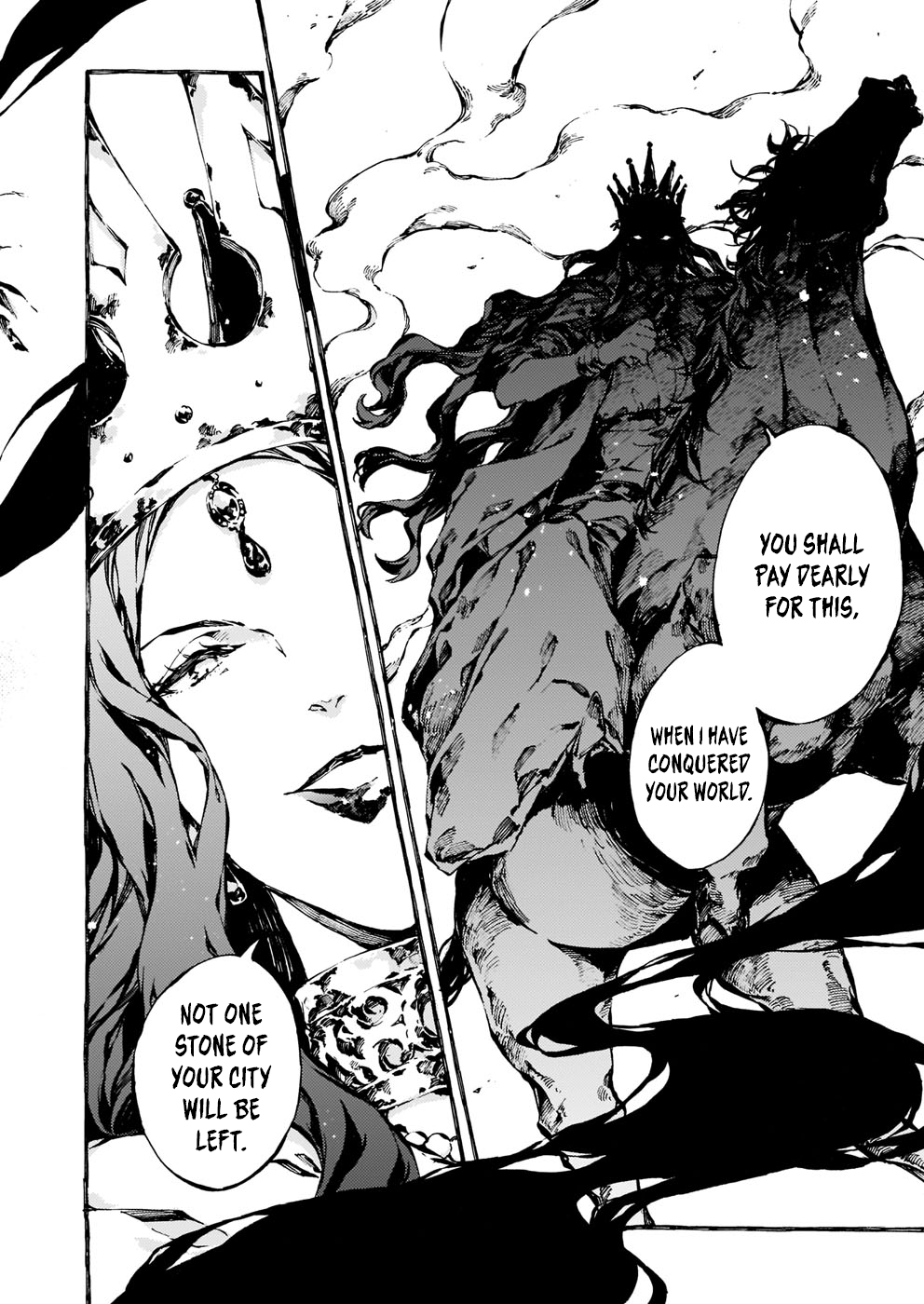

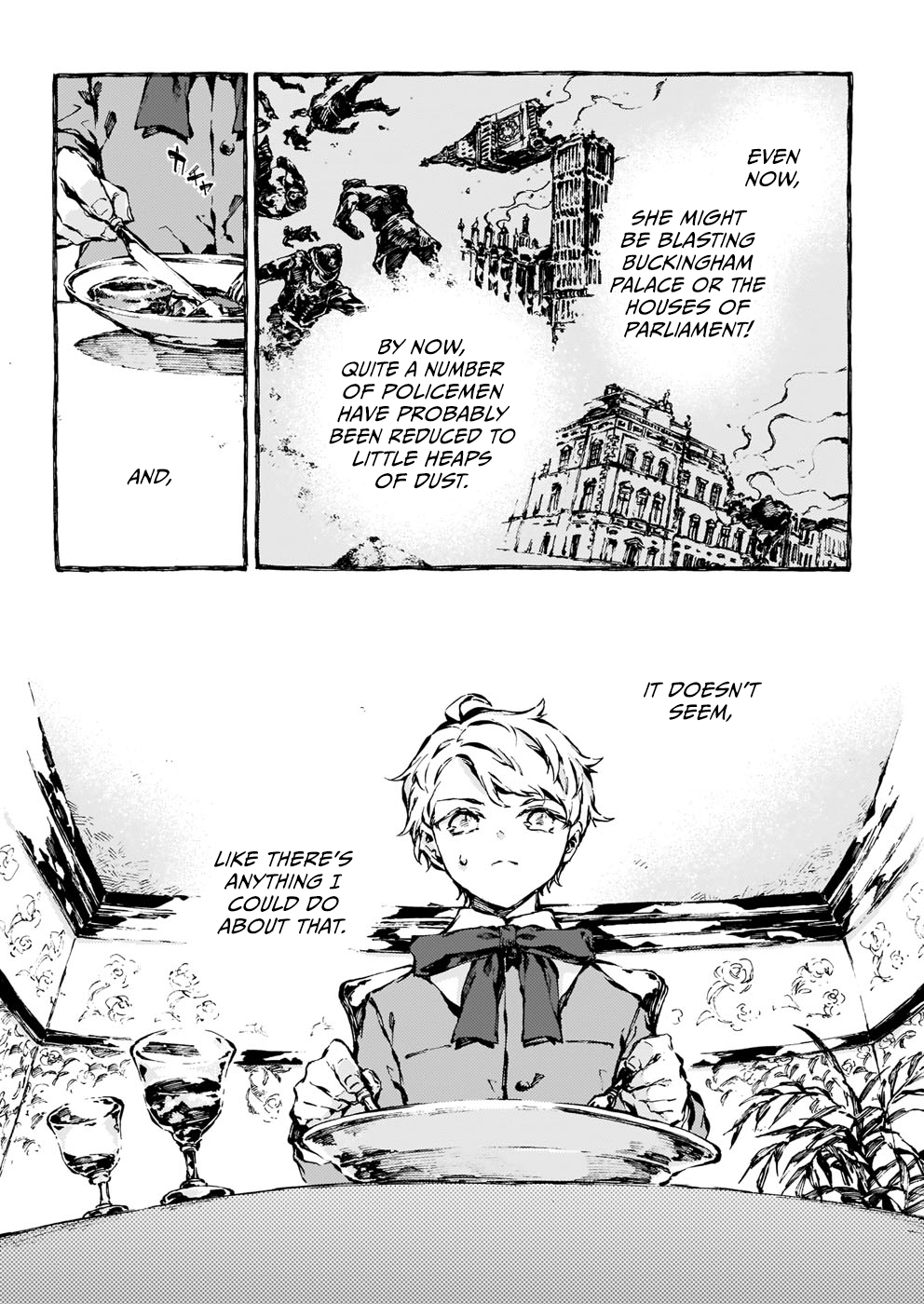 (Images from Tamaki Iori’s wonderful 2018 manga adaptation)
(Images from Tamaki Iori’s wonderful 2018 manga adaptation)
Seisenshi Dunbine’s immense influence was not restricted to putting mechs in most of the next 15 years of isekai anime. Twenty of its forty-nine episodes are set in this world, whose weapons and political systems are wholly incapable of dealing in any way with the power of Aura Battlers. On the first trip, the main character, Shou Zama, is assumed by the government to be an alien and shot at by his own parents, who are later taken hostage in an effort to coerce him; he eventually accepts the identity of a shape-shifting “alien” to clear their name.

 The enemy pilot taken back with him, Galaria, uses her powers recklessly. She forces Shou into a battle, and 300,000 people die as collateral damage.
The enemy pilot taken back with him, Galaria, uses her powers recklessly. She forces Shou into a battle, and 300,000 people die as collateral damage.

Aura Machines – the mechs in the setting – are themselves the invention of an ambitious otherworlder, California’s Shot Weapon, and their invention destabilizes the politics of Byston Well, prompting the rise of an expansionist empire. The Ferario, with some help from the protagonists, ultimately banish all the mechs and their pilots to Earth, but this is not enough to end the fighting, for Earth is no better equipped to resist.
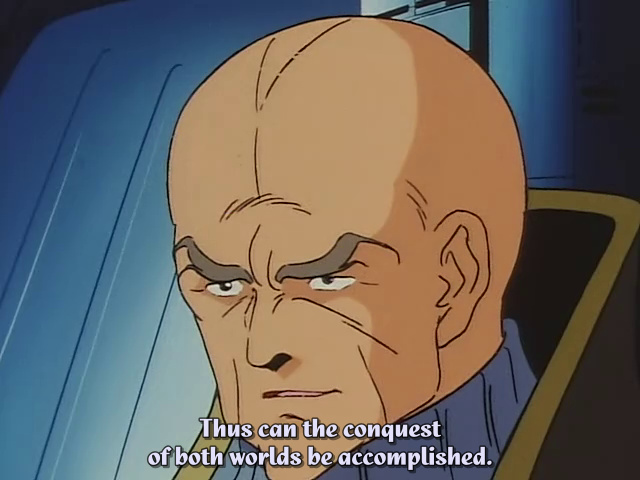
The villain, Drake Luft, takes the White House hostage, prompting many bitter arguments from the Americans in its supporting cast over what constitutes treason.
 Oslo goes on strike.
Oslo goes on strike.
 Paris burns.
Paris burns.

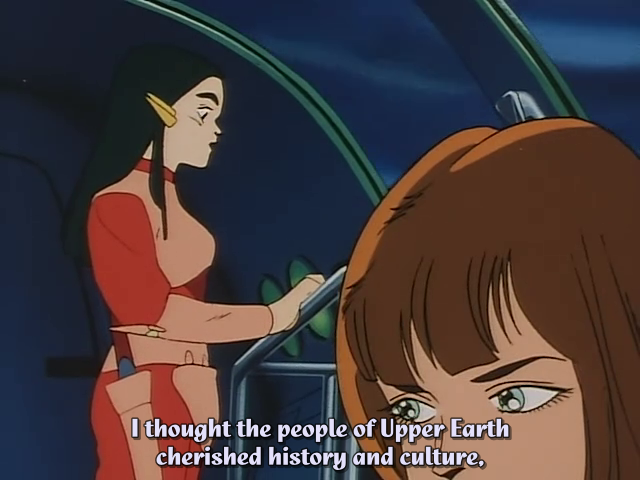 And yet the internal politics of Drake’s own empire devolve into a bitter civil war; it is not one nation or another, but war itself which is the true enemy.
And yet the internal politics of Drake’s own empire devolve into a bitter civil war; it is not one nation or another, but war itself which is the true enemy.
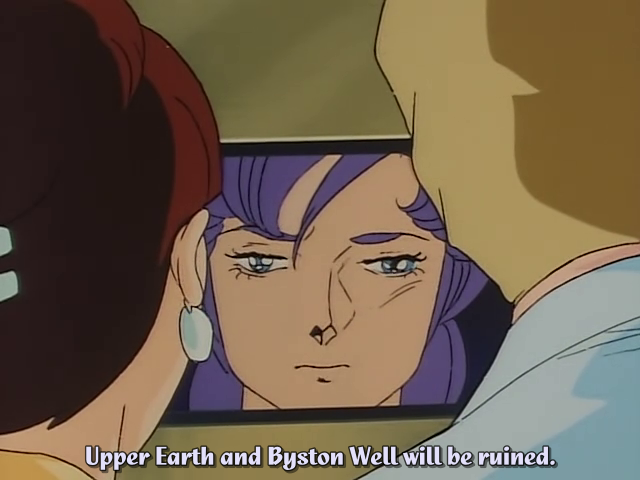 Make no mistake, this is a war in which human militaries, lacking aura powers, struggle to contribute to in any way; desperation moves such as nuclear weapons and kamikaze attacks only modestly effect the outcome of a conflict in which otherworlders and returnees dominate on both sides.
Make no mistake, this is a war in which human militaries, lacking aura powers, struggle to contribute to in any way; desperation moves such as nuclear weapons and kamikaze attacks only modestly effect the outcome of a conflict in which otherworlders and returnees dominate on both sides.
Digimon Adventure takes acknowledged inspiration from Dunbine, but unlike Dunbine’s parents, who are at war with their children, Digimon’s want to support them. But this desire alone is not always enough to smooth over the difficulties of a parent-child relationship, one made far more difficult when their children are dealing with a world the parents simply do not understand. Attempts to pass their partners off as plushies, or wearing human disguises, provide a lot of the comedy for the earlier episodes of its Earth arc.
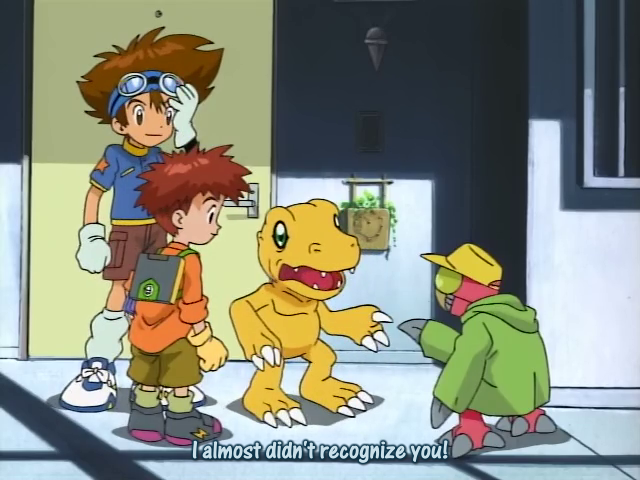
Digimon also draws from kaiju movies – these are, after all, giant monsters, not mechs or fairies – with all that implies for the fate of landmarks of Odaiba, which also contains the homes of its characters. Tokyo Big Sight, best known to anime fans for hosting the biannual Comic Market, or Comiket, is used to hold much of its population when Vamdemon takes them hostage. The ferris wheel is blown up, the rainbow bridge damaged, and the Fuji TV observation dome is used as a weapon – this time by the good guys!

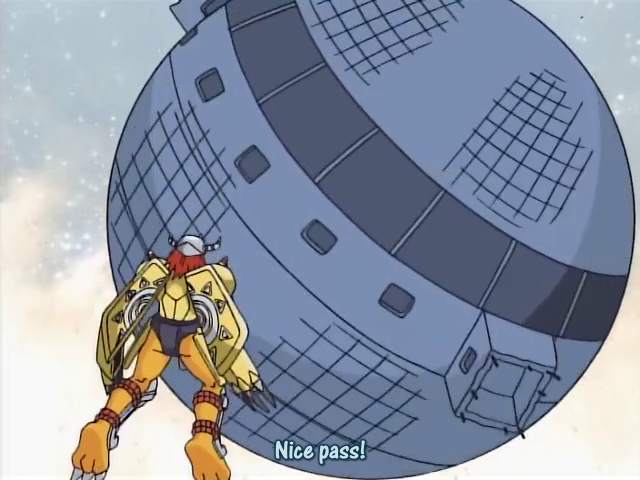
Moreover, it should be emphasized that these monsters are digital, and capable of causing destructive interference to the human world’s electronics. The movie Bokura no War Game expands on this theme, with Diablomon doing everything people feared from the Y2K bug, but even in Adventure itself, planes crash upon contact with a city, fog cuts off a city, and computerized weapons fail to function.

The direct sequel, Digimon Adventure 02, gives us, after 39 episodes of back-and-forth journeys and a secret digital world, gates opened all across Earth. Chaos, and a world tour, ensues – there’s battles from the ruins of Palenque to the Great Barrier Reef, and a poignant scene of soldiers on the China-India border allowing digimon to cross.

Digimon Adventure tri. debuts the first attempts at anti-digimon weapons, which are nowhere near capable of handling a threat so severe that rebooting one or two worlds may be required to fix it; humanity is nothing compared to Homeostasis and Yggdrasil.
 Humanity in 2005 is deeply suspicious of digimon – Togemon accidentally crashes a news helicopter, Taichi, leader of the Chosen Children, is paralyzed with indecision upon viewing the collateral damage of their battles, and the children are arrested on sight when spotted with their partners.
Humanity in 2005 is deeply suspicious of digimon – Togemon accidentally crashes a news helicopter, Taichi, leader of the Chosen Children, is paralyzed with indecision upon viewing the collateral damage of their battles, and the children are arrested on sight when spotted with their partners.

In 2027-8, everyone will have a digimon partner, with all the dramatic societal change this implies; the best humanity can do is try to manage the chaos.
GATE: Jieitai Kanochi nite, Kaku Tatakaeri begins with a scenario which would be a nightmare for the government in Dunbine, Digimon, or indeed any isekai anime I’m aware of which preceded this one; a full-fledged invasion from the other world, complete with dragons.

 The invaders are, however, thoroughly defeated by Japan’s self-defense force, and Japan annexes the land beyond the titular gate for good measure.
The invaders are, however, thoroughly defeated by Japan’s self-defense force, and Japan annexes the land beyond the titular gate for good measure.

The story focuses on the adventures of Japan’s expeditionary force, complete with reports back to the Japanese Diet, elf, mage, and all. Starting a war against an enemy they did not understand and can not defeat has led to quite the internal conflict in said empire, with some hoping to turn things around, or at least use it to their advantage.
 The empire which started said war is a feudal society placed in sudden contact with modernity and imperialism. GATE overall takes a jingoistic tone. Antiwar politicians are treated by the narrative with mockery, and the JSDF avoids atrocities in a manner matched by few if any real-world armies, even helping locals (with a fair bit of difficulty) fight off a dragon.
The empire which started said war is a feudal society placed in sudden contact with modernity and imperialism. GATE overall takes a jingoistic tone. Antiwar politicians are treated by the narrative with mockery, and the JSDF avoids atrocities in a manner matched by few if any real-world armies, even helping locals (with a fair bit of difficulty) fight off a dragon.
 But there is no doubting that the empire’s old rulers, at least, have an awful lot to lose.
But there is no doubting that the empire’s old rulers, at least, have an awful lot to lose.
If GATE’s worldview is a bit much for you, or if you just want an opposite take on a similar concept, consider watching Outbreak Company. The two series have remarkably similar settings; both are steeped in otaku culture, both feature heroes dispatched from Japan to another world which Japan seeks to dominate. Where they differ is that Outbreak Company’s Japan is not portrayed nearly so favorably; it is seeking cultural victory as a road to economic dominance, and chooses a hikokomori protagonist because they will not be missed.
 Ultimately, the MC sides with the otherworlders, and the government which left its people isolated is defeated by the power of doujin culture.
Ultimately, the MC sides with the otherworlders, and the government which left its people isolated is defeated by the power of doujin culture.
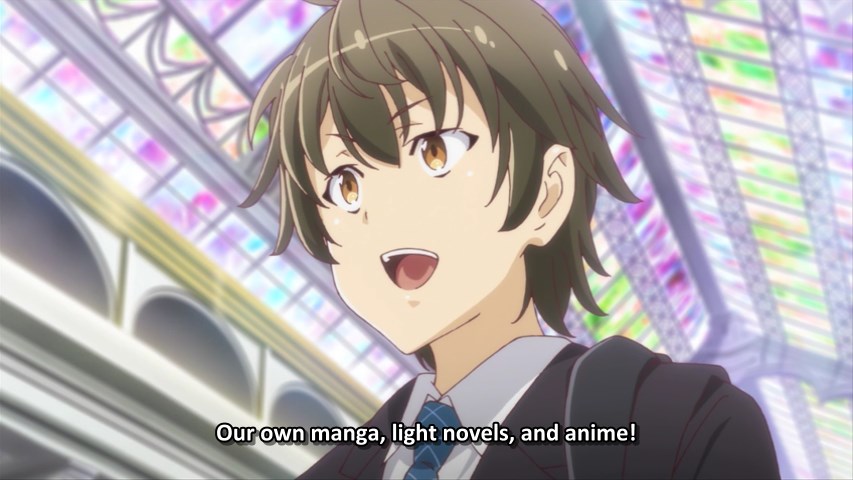 It's a unique and overlooked series, and I've written up my complete thoughts on it in an earlier post.
It's a unique and overlooked series, and I've written up my complete thoughts on it in an earlier post.
If, on the other hand, you just want more in the same vein as GATE, but didn't like Itami and just want to send all of Japan, consider reading Nihonkoku Shoukan. In this manga, Japan, with its modern weapons, amends the constitution in order to get food aid from the other world in exchange for military support. A bunch of lopsided battles ensue, complete with protecting the weak from oppressive empires and the other world struggling to comprehend the advanced country which has suddenly appeared beside them.
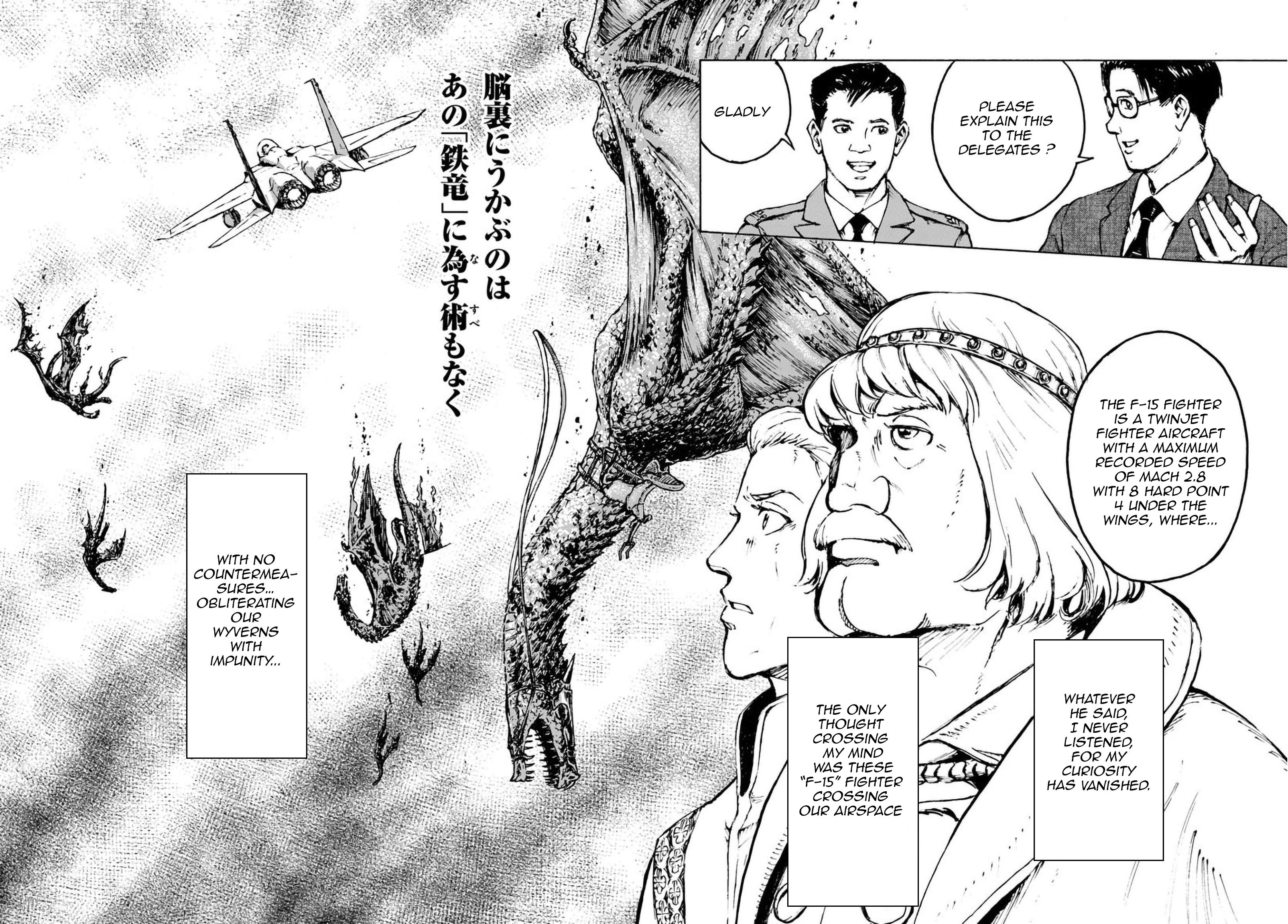
 It is tempting, and not entirely unjustified, to view Dunbine, Digimon, and GATE in succession as humanity slowly learning to resist the powers of the other world. But this takes things too far; Sasaki to Pii-chan, airing this season, after all, spends episodes in alternating worlds, where the title character has done quite well for himself with a trading company, and the magic power of the other world vastly exceeds this world’s psychics can do. There's an entertaining scene in episode eight where the second title character, a star sage reincarnated as a bird, reassures a visiting princess about the threat from Earth. One can point to a trend in that direction, especially with GATE’s undeniable popularity and imitators, but modern weaponry is no panacea against the dangers of other worlds.
It is tempting, and not entirely unjustified, to view Dunbine, Digimon, and GATE in succession as humanity slowly learning to resist the powers of the other world. But this takes things too far; Sasaki to Pii-chan, airing this season, after all, spends episodes in alternating worlds, where the title character has done quite well for himself with a trading company, and the magic power of the other world vastly exceeds this world’s psychics can do. There's an entertaining scene in episode eight where the second title character, a star sage reincarnated as a bird, reassures a visiting princess about the threat from Earth. One can point to a trend in that direction, especially with GATE’s undeniable popularity and imitators, but modern weaponry is no panacea against the dangers of other worlds.



